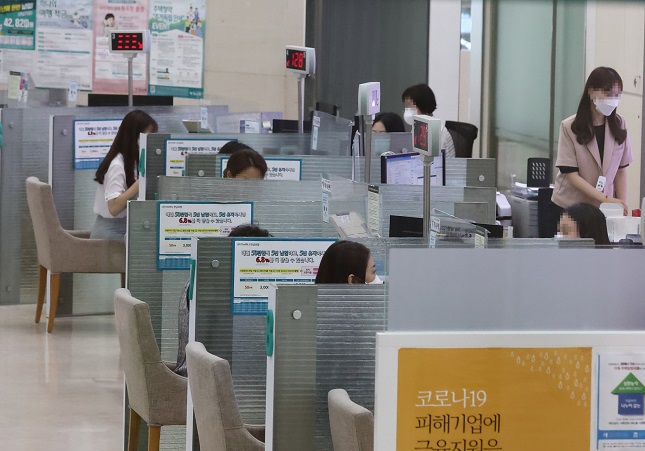
Nearly one-third of those who have taken out loans from insurance companies are overwhelmed by obligations to multiple lenders. (Image courtesy of Yonhap)
SEOUL, Mar. 18 (Korea Bizwire) – As concerns grow over household debt levels in South Korea, a new analysis has found that nearly one-third of those who have taken out loans from insurance companies are overwhelmed by obligations to multiple lenders, raising fears of potential defaults.
The study by Lee Suk-ho, a senior research fellow at the Korea Institute of Finance, showed that 32.1 percent of individual borrowers from insurance firms held loans from three or more financial institutions as of the end of 2022. Such heavily leveraged borrowers are considered at high risk of delinquency.
While the proportion of distressed multi-loan borrowers was lower at insurance companies than at savings banks (38.3 percent) and credit card issuers (33.7 percent), it far exceeded the ratios at commercial banks (10.4 percent), capital companies (28.7 percent) and credit unions (14.8 percent).
On average, the outstanding loan balance for multi-loan borrowers stood at around 43 million won at insurance firms — the second-highest level in the financial industry after credit unions.
“Multi-loan borrowers tend to have bigger debt loads and lower chances of recovering creditworthiness through repayments,” Lee said, adding that this group faces “not only a higher likelihood of default but also the risk of setting off a chain of bad loans.”
The analysis also showed that only 38.1 percent of delinquent borrowers at insurance companies were able to restore their credit standing — a lower rate than at banks (43.8 percent) and credit unions (57.7 percent).
While South Korea’s insurance sector overall remains financially sound, the findings suggest rising vulnerabilities as interest rates climb and real estate markets cool. Nonperforming loans at insurers totaled around 850 billion won as of September, a tiny 0.5 percent of their total capital — far below levels at other non-bank lenders like savings banks.
But loss-absorbing provisions against soured loans were only 158.1 percent of substandard assets at life insurers, and 89.2 percent at property-casualty firms — lower than at banks. Some smaller property insurers had set aside reserves covering less than 70 percent of questionable loans.
Lee cautioned that if unfavorable economic conditions persist, “there is a possibility that potential risk factors surrounding insurers’ loan assets could materialize.” Thorough monitoring and preemptive preparations are needed, he urged.
M. H. Lee (mhlee@koreabizwire.com)






